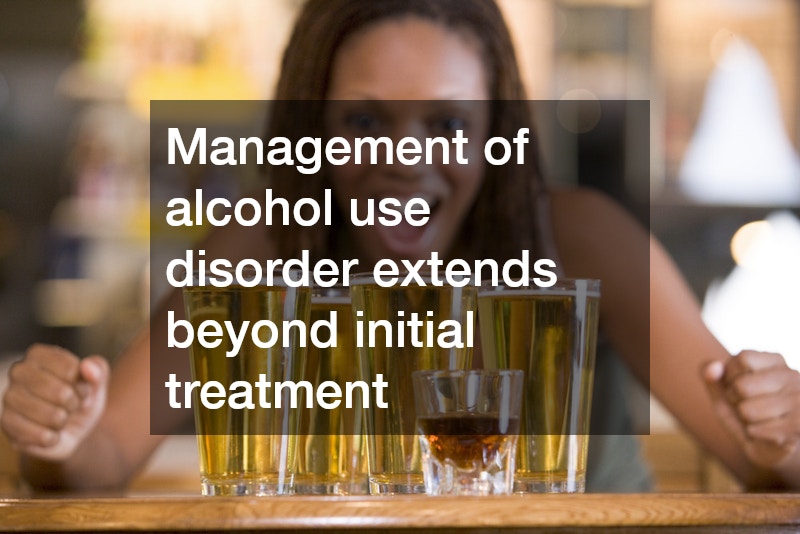Alcohol use disorder, commonly known as alcoholism, is a serious condition that affects millions of people worldwide. Understanding this disorder is crucial to addressing and managing its impact on individuals and societies. This article delves into what alcohol use disorder entails, its symptoms, causes, treatment options, and preventive measures.
Understanding Alcohol Use Disorder
Alcohol use disorder is a chronic disease characterized by an inability to control alcohol consumption despite negative consequences. It affects both mental and physical health, often leading to severe issues in various aspects of life.
The disorder can range from mild to severe, and those struggling with it may experience intense cravings, loss of control over drinking, and withdrawal symptoms when not drinking.
The National Institute on Alcohol Abuse and Alcoholism (NIAAA) classifies alcohol use disorder as encompassing a spectrum. These span from risky drinking behaviors to alcohol dependence, highlighting its complexity. For many, recognizing the onset of the disorder is difficult, primarily because alcohol use is socially normalized, making it challenging to pinpoint when it becomes problematic.
Alcoholism often develops gradually and can progress over several years or occur more quickly. The disease’s nature means it affects people differently, depending on genetic, psychological, and environmental factors. Understanding these nuances is vital for offering targeted support and interventions to those affected.
Symptoms and Diagnosis
Identifying symptoms of alcohol use disorder early on is key to securing timely intervention. Common symptoms include drinking more than intended, persistent desire to cut down on drinking, and spending a significant amount of time obtaining and consuming alcohol. Individuals may neglect important responsibilities or social activities, and continued use despite knowing its harmful effects is another significant marker.
Diagnosis of alcohol use disorder typically involves a thorough evaluation by a healthcare professional. They may use screening tools and assessments to understand the pattern of alcohol use and its impact on daily life. Laboratory tests may not diagnose the disorder directly, but can help assess related health issues, such as liver damage.
It is crucial to differentiate between moderate alcohol consumption and alcoholism. Often, individuals or families in denial of the disorder justify excessive drinking as normal behavior. A comprehensive evaluation can assist in clarifying such misconceptions, reinforcing the need for professional assessment to reach an accurate diagnosis.
Causes of Alcoholism
The causes of alcoholism or alcohol use disorder are multifaceted, often comprising genetic, psychological, social, and environmental factors. A family history of alcohol problems substantially increases the likelihood of developing the disorder. This suggests a genetic component, where individuals may be more predisposed to addiction-related behaviors.
Psychological factors, such as high levels of stress, depression, or anxiety, can also play a significant role. People often turn to alcohol as a form of self-medication to deal with their emotions or mental health issues, exacerbating the risk. Additionally, exposure to trauma or adverse environments during childhood may contribute to the onset of drinking problems later in life.
Social factors, including peer pressure and cultural norms, can significantly influence drinking behaviors. Events or environments that promote alcohol consumption can blur the line between social drinking and problematic drinking. Recognizing and addressing these causes through individual and societal interventions is critical to preventing and managing alcoholism.
Treatment Options
Effective treatment for alcohol use disorder requires a comprehensive approach tailored to individual needs. Behavioral therapies, such as cognitive-behavioral therapy (CBT), are widely regarded as effective. These therapies help individuals build coping strategies to manage triggers and develop healthier alternatives to handling stress or emotional pain.
In certain cases, medication-assisted treatment can also be beneficial in managing alcoholism. Medications, like naltrexone, acamprosate, and disulfiram, can aid in reducing cravings and discouraging alcohol use. A healthcare provider can determine the appropriateness of these medications, ensuring they complement therapeutic interventions.
Support groups, such as Alcoholics Anonymous (AA), provide community and peer support that can be instrumental in maintaining sobriety. These programs offer structured guidance and foster an environment where individuals can share experiences and encouragement. Combining professional treatment with such support systems enhances the likelihood of long-term recovery.
Prevention and Management
Preventing alcohol use disorder is a societal challenge that requires education, policy changes, and awareness initiatives. Efforts aimed at reducing stigma, promoting mental health, and providing supportive environments can deter the onset of problem drinking. Educational programs targeting youths can foster healthy attitudes toward alcohol consumption, reducing the risk of abuse.
Management of alcohol use disorder extends beyond initial treatment and into ongoing care and vigilance. Relapse prevention strategies, such as continued therapy and lifestyle changes, are crucial to maintain sobriety. Encouraging open communication within families and communities fosters a network of support, essential for sustainable recovery.
Acknowledging the complex nature of alcoholism is vital to crafting effective prevention and management strategies. It necessitates a coordinated effort from healthcare providers, communities, and policymakers. By prioritizing comprehensive care and inclusive public health initiatives, we can better address the widespread impact of alcohol use disorder.



